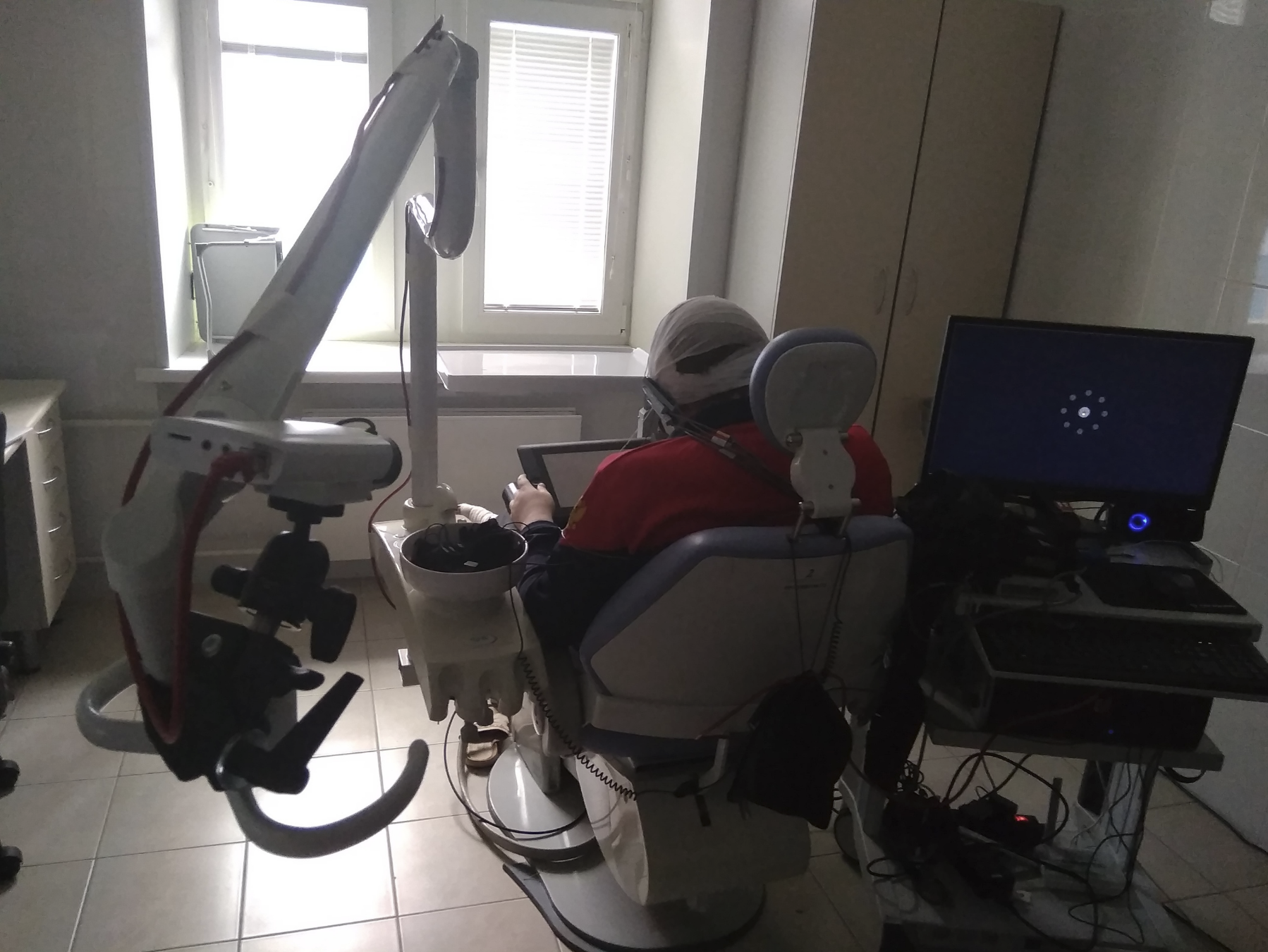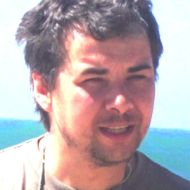Our clinical studies
Megagrant #14.641.31.0000. Lead scientist: Mikhail Lebedev. Invasive neural interfaces involve the analysis of electrocortigocraphical (ECoG) data recorded from subdurally implanted electrode arrays. This can be done in patients who require implanting an electrode array for medical reasons, therefore ECoG recording sessions are conducted exclusively in clinical settings. Our Center collaborates with two clinics: Clinical Medical Center of the Yevdokimov Moscow State Medico-Dental University and the Polenov Russian Research Institute of Neurosurgery.
For invasive brain research we set up a specialized lab at the Yevdokimov Moscow State Medico-Dental University and created an experimental system for ECoG-based movement decoding. Because at the current stage we focus is on decoding kinematic parameters of movement (direction and trajectory), our system incorporates equipment for real-time finger motion capture (Perception Neuron), a graphical tablet for use in decoding the direction of fine movements (e.g. during writing) and the EBNeuro BE Plus LTM 64 amplifier for ECoG recording and patient monitoring before and after the experiment.
In October we conducted initial experiments on patients. Our design included two tasks. In the first one, patients performed self-paced stereotypical finger movements (one finger per trial) upon stimulus presentation. In the second, patients made movements on the tablet in a modified center-out paradigm classically used in studies of movement direction correlates. The video linked below shows an example where a patient performs free stereotypical finger movements. Each trial starts with an on-screen cue indicating which finger to move freely during the course of the trial.
The next video shows the modified center-out paradigm, in which the patient moves their hand from the center of a circle toward its periphery. At the beginning of each trial, the patient is instructed to fixate the pen in center of the circle then, upon presentation of a directional cue (dot on the circle), move the pen in the appropriate direction.
This work was funded by Megagrant #14.641.31.0003 of the Government of the Russian Federation to support research conducted in Russian institutions of higher education, research organizations and state research centers under the Subprogram of Institutional Development of the Research Sector (State Program "Developing Science and Technology" in 2013-2020). Lead scientist: Mikhail Lebedev.


